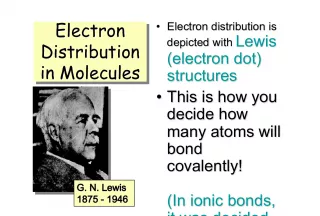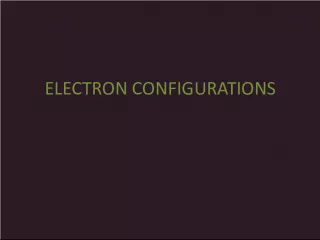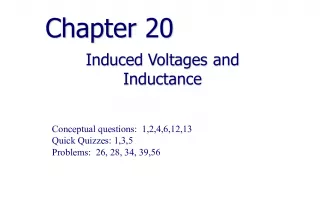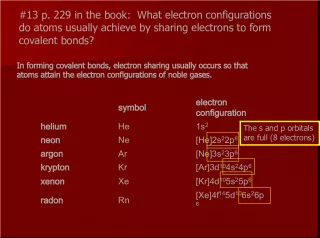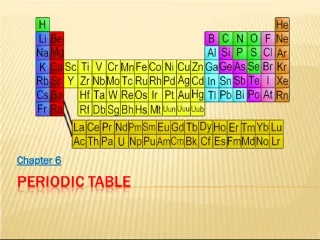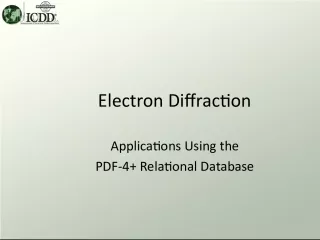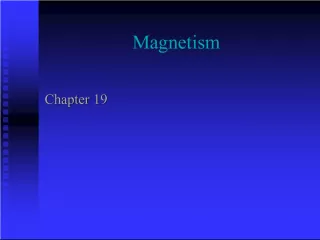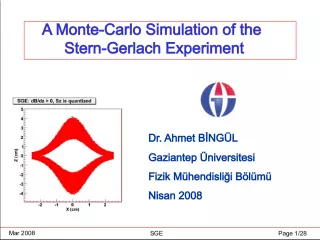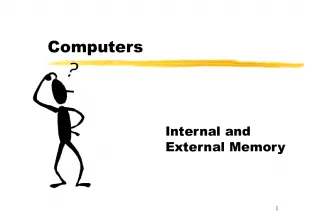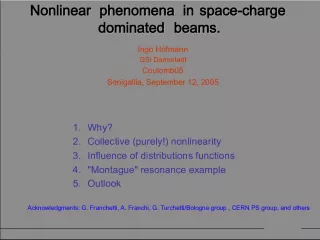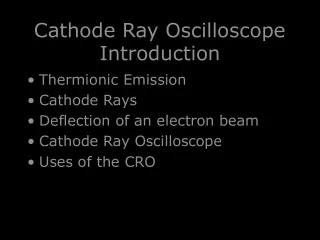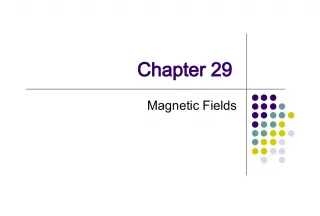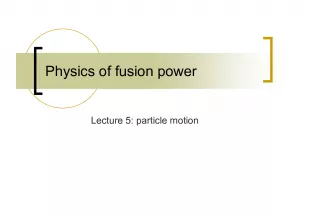Exploring Symmetry Aspects of Electron Magnetic Resonance (EMR)
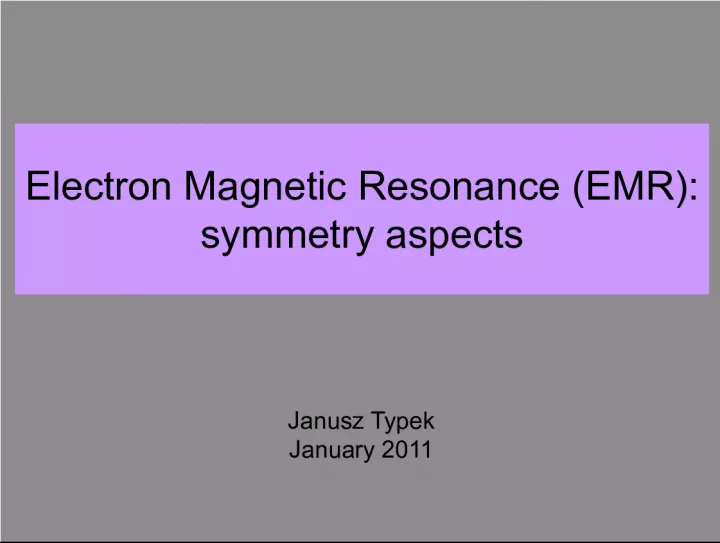

This article discusses the importance of understanding symmetry aspects in EMR spectroscopy studies of transition ions in crystals. It includes a primer for experimentalists and references to relevant books and internet sources.
- Uploaded on | 1 Views
-
 lizethkiehn
lizethkiehn
About Exploring Symmetry Aspects of Electron Magnetic Resonance (EMR)
PowerPoint presentation about 'Exploring Symmetry Aspects of Electron Magnetic Resonance (EMR)'. This presentation describes the topic on This article discusses the importance of understanding symmetry aspects in EMR spectroscopy studies of transition ions in crystals. It includes a primer for experimentalists and references to relevant books and internet sources.. The key topics included in this slideshow are EMR, symmetry, transition ions, crystals, EPR spectroscopy,. Download this presentation absolutely free.
Presentation Transcript
1. Electron Magnetic Resonance (EMR): symmetry aspects Janusz Typek January 2011
2. References Article: Cz. Rudowicz, P. Gnutek Low symmetry aspects involved in EMR spectroscopy studies of transition ions in crystals a primer for experimentalists (in preparation) Book: M.L. Miejlman, M.I. Samojowicz Wprowadzenie do spektroskopii EPR domieszkowanych monokrysztaw (Atomizdat 1977) (ros.) Book: Electron Paramagnetic Resonance a practitioner's toolkit, Ed. M. Brustolon, E. Giamello (Wiley 2009) Various internet sources
3. Outlook Crystallographic symmetries Symmetries in EMR Reference frames in EMR
4. Symmetries in crystallography Crystal systems Lattice systems Space group symmetry Point group symmetry Laue symmetry
5. General overview 11 Laue Classes Add centre of inversion
6. Crystal system s Crystals are grouped into seven crystal systems, according to characteristic symmetry of their unit cell . The characteristic symmetry of a crystal is a combination of one or more rotations and inversions.
7. triclinic trigonal hexagonal cubic tetragonal monoclinic orthorhombic 7 Crystal Systems
8. Lattices In 1848, Auguste Bravais demonstrated that in a 3-dimensional system there are fourteen possible lattices A Bravais lattice is an infinite array of discrete points with identical environment seven crystal systems + four lattice centering types = 14 Bravais lattices Lattices are characterized by translation symmetry Auguste Bravais (1811-1863)
9. No . Type Description 1 Primitive Lattice points on corners only. Symbol: P. 2 Face Centered Lattice points on corners as well as centered on faces. Symbols: A (bc faces); B (ac faces); C (ab faces). 3 All-Face Centered Lattice points on corners as well as in the centers of all faces. Symbol: F. 4 Body-Centered Lattice points on corners as well as in the center of the unit cell body. Symbol: I. Four lattice centering types
10. 10 Arrangement of atoms determines unit cell geometry: Primitive = atoms only at corners Body-centered = atoms at corners and center Face-centered = atoms at corners and 2 (or more) faces Lengths and angles of axes determine six unit cell classes Same as crystal classes Unit Cell Geometry
11. Point group symmetry Inorganic crystals usually have perfect shape which reflects their internal symmetry Point groups are originally used to describe the symmetry of crystal. Point group symmetry does not consider translation. Included symmetry elements are rotation, mirror plane, center of symmetry, rotary inversion.
12. The combination of all available symmetry operations (32 point groups), together with translation symmetry, within the all available lattices (14 Bravais lattices) lead to 230 Space Groups that describe the only ways in which identical objects can be arranged in an infinite lattice . The International Tables list those by symbol and number, together with symmetry operators, origins, reflection conditions, and space group projection diagrams. Space groups
13. Laue classes
14. International Tables for Crystallography Volume A Space-group symmetry Volume A1 Symmetry relations between space groups Volume B Reciprocal space Volume C Mathematical, physical and chemical tables Volume D Physical properties of crystals Volume E Subperiodic groups Volume F Crystallography of biological macromolecules Volume G Definition and exchange of crystallographic data
15. International Tables for Crystallography International Tables for Crystallography
17. M.L. Miejlman, M.I. Samojowicz G 0 przestrzenna grupa symetrii (230 grup). Jest to peny zbir przeksztace symetrii przeprowadzajcych zbir punktw krysztau w siebie. G A lokalna (punktowa) grupa symetrii pozycji A (32 grupy). Jest to zbir operacji symetrii przeksztacajcych kryszta w siebie i nie zmieniajcy punktu A. Jest: G A G 0 Zatem np. w krysztaach nalecych do ukadw tetragonalnego i jednoskonego nie bdzie punktw o symetrii trygonalnej, poniewa adna z grup G 0 tych ukadw nie zawiera osi trjkrotnej. G punktowa grupa symetrii struktury krysztau (klasa symetrii, grupa symetrii kierunkw) (32 grupy). Opisuje symetri zewntrznych cian krysztau. Grupa G moe zawiera elementy symetrii, ktrych nie ma G 0 (np. prost o zamiast osi rubowej lub prost paszczyzn zamiast paszczyzny polizgowej. G A G W rezonansie magnetycznym wiedza o grupie G A jest najwaniejsza!
18. M.L. Miejlman, M.I. Samojowicz N NaCl G 0 =Fm3m (O h 5 ) Na: pozycja (a) G a =O h , K a =1 Cl: pozycja (b) G b =O h , K b =1 K A =p(G)/p(G A ) jest iloci rwnowanych punktw w komrce elementarnej
19. M.L. Miejlman, M.I. Samojowicz K krotno (ilo) strukturalnie nierwnowanych punktw K M krotno (ilo) magnetycznie nierwnowanych centrw paramagnetycznych Dla struktur bez centrum symetrii: K M =K Dla struktur z centrum symetrii: pozycja z centrum symetrii K M =K pozycja bez centrum symetrii K M =K /2 = B -B EMR Jest to efekt niezmienniczoci struktury energetycznej centrw EMR wzgldem odwrcenia kierunku upywu czasu
20. M.L. Miejlman, M.I. Samojowicz Dla jednego rodzaju centrum magnetycznego G M punktowa grupa symetrii widma EMR pozycji G punktowa grupa symetrii punktu Na podstawie zasady Curie-Neumanna: Grupa G M zawiera wszystkie elementy grupy G : G M G Dla penego widma Grupa G M zawiera wszystkie elementy grupy G: G M G (G M ) min =G x I (G M ) mn =G x I Zatem z EMR mona okreli jedynie 11 klas Lauego powstaych z 32 grup punktowych
21. Internet sources F. N. Neumann principle (1833) Any physical property of a medium must be invariant under the symmetry operations of the point group of the medium Crystal point group K P property group Example 1. Optical properties of cubic crystals are isotropic Example 2. Property characterised by polar second rank tensor are centrosymmetric, but crystal may not have inversion P. Curie principle (1894) Medium subjected to an external action changes its point symmetry so as to preserve only the symmetry elements common with these of the influencing action K K=K E, w here K is the highest common subgroup, E external influence symmetry group If K E , then K=K. If K is a subgroup of E, the symmetry of a medium is not influenced by the external action.
22. M.L. Miejlman, M.I. Samojowicz
23. M.L. Miejlman, M.I. Samojowicz Dwa rwnowane EMR centra K M =2 Symetria kadego G M =D 2h Osie centrw: z 1 ||z 2 , x 1 ||y 2 . y 1 ||x 2 Grupa symetrii penego widma G M =D 4h Dla rutylu G 0 =D 4h 14
24. M.L. Miejlman, M.I. Samojowicz Etapy okrelenia klasy (grupy punktowej) struktury krystalicznej 1. Okrelenie klasy Lauego (centrosymetryczna) G G M G G G G=G x I Gdy wystpuj centra magnetyczne rnych rodzajw i typw lub gdy centrum wystpuje w pozycji o symetrii oglnej to G M =G 2. Okrelenie, czy istnieje centrum symetrii I Zbada wpyw zewntrznego pola elektrycznego. Kryszta ma centrum symetrii Efekt polowy jest kwadratowy, linie si nie rozszczepiaj pod wpywem pola elektrycznego E Kryszta nie ma centrum symetrii Efekt polowy jest liniowy, rozszczepienie i przesunicia linii zalene od znaku pola elektrycznego E 3. Udokadnienie prawdziwej grupy punktowej G Brak oglnej metody, naley rozpatrze symetrie punktowe poszczeglnych pozycji (gdy jest ich kilka). Da si to zrobi tylko w niektrych przypadkach .
25. Low symmetry effects (CzR) Imaginary ZFS terms in SH Non-coincidence of extrem a for resonance between different Zeeman levels Non-coincidence of axes of g and A tensors Only 180 rotational symmetry of spectrum Appearance of forbidden hyperfine transitions along principle axes of D tensor
26. Low/high site symmetry ? L L L L L
27. Reference axis systems (CzR) Symmetry adapted axis system (SAAS) The symmetry elements of a given point symmetry group may be used to form a natural Cartesian axis system. For monoclinic and triclinic site symmetry no proper SAAS can be selected. In this case the set of approximated higher symmetry axes could be used . Crystallographic axis system (CAS) CAS is defined by the unit cell vectors (a, b, c) f o r a given spa c e group. The difference between SAAS and CAS is illustrated for BaPrO 3 crystal. Site symmetry of Pr 4+ position is C i due to distortion of octahedron . SAAS axes do not coincide with the unit cell axes. For crystals belonging to the monoclinic and triclinic space groups a modified CAS (a, b, c) * is used.
28. Reference axis systems (CzR) Laboratory axis system (LAS) This is a system in which raw experimental EMR spectra are recorded. Two types due to two ways of selection of axes: LAS-S with respect to spectrometer, in particular , goniometer, LAS-C with respect to the crystal Principle axis system (PAS) of the 2nd-rank SH terms Any 2nd-rank symmetric tensor with non-diagonal components expressed in its original axis system as a 3x3 matrix may be brought by a proper transformation to the diagonal form. Such transformation, i.e. diagonalization, may be represented as a rotation in 3 dimensional space and the system of coordinates in which a tensor X is diagonal is called the principal axis system ( PAS ) of this tensor . PAS-D, PAS-g, PAS-A, PAS-P
29. Reference axis systems (CzR) Magnetic axis system (MAS) Three different types of the axis systems associated with the external magnetic field B may be identified in EMR literature (i) magnetic axes in which only one component of the spin operator S is sufficient , Pake and Estle (1973) present a clear description of the - axis for the magnetic axis system of the type (i) as: the direction of the vector H.g . symbolic magnetic axes with the z-axis along B , experimentally determined magnetic axes Here we mean the experimentally determined magnetic axes (Xmag, Ymag, Zmag), which are most commonly defined in EMR literature in relation to the experimentally observed splittings of EMR lines due to the allowed transitions between spin states for a given (effective) spin S
30. Anizotropia oddziaywania Zeemanowskiego - Tensor g
33. Przykad - kty Eulera

